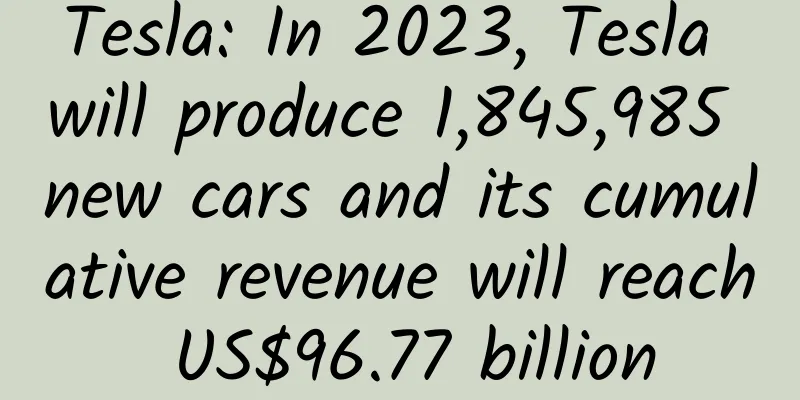BYD throws another "nuclear bomb", another great national technology - the mass production time of solid-state batteries is set

|
All-solid-state batteries, a technology that has been mentioned every year but never implemented, finally received a response in 2025. In recent days, BYD has revealed the dynamics of its all-solid-state batteries. At the Second China All-Solid-State Battery Innovation and Development Summit Forum on February 15, BYD Lithium Battery Company CTO Sun Huajun revealed that BYD has rolled off the production line of 60Ah all-solid-state batteries in 2024; it will start mass demonstration and installation of all-solid-state batteries around 2027, and realize large-scale installation after 2030. At the same time, BYD also shouted the slogan of "same price for solid and liquid". I don’t know what other car companies in the automotive industry think when this official announcement came out, but as a spectator, I am indeed a bit shocked. After all, all-solid-state battery technology has always given people a feeling of much ado about nothing, and now this news from BYD is equivalent to turning the dream into reality. Of course, BYD's investment is naturally not small in order to be the first to launch the "nuclear bomb" of all-solid-state batteries in 2025. It is reported that BYD had already invested in the research of solid-state lithium batteries as early as 2016, and has never given up exploring in this field over the years. In fact, as early as 2022, there were rumors that BYD's solid-state lithium batteries were produced in Chongqing and were about to be installed for testing. However, BYD did not give a clear response at the time. Looking back now, BYD is indeed very wise. Technology has always been Di Zi's strong point. Choosing to sprint into the field of solid-state batteries in 2025 when the technology is more mature and the timing is more favorable is obviously more reliable than relying on "gimmicks and pie in the sky" to gain traffic in the previous two years. BYD is not the only one with a clear mind. In recent years, many car companies have continued to invest in solid-state batteries, and it seems to have become a consensus to set the installation plan between 2026 and 2030. For example, as early as last year, Tailan New Energy jointly launched diaphragm-free solid-state lithium battery technology with Changan Automobile, and plans to start vehicle testing in 2026. The diaphragm-free all-solid-state battery is expected to be mass-produced in 2027 and to be used in special fields for demonstration purposes. Chery also stated that it is developing Kunpeng solid-state batteries, and plans to achieve targeted operation of solid-state batteries in 2026 and mass-market them in 2027. GAC Group officially announced that it has successfully completed the full-process manufacturing process of all-solid-state batteries. It is expected that the product will be officially installed in 2026 and installed on the Haobo model. In addition, automakers such as SAIC, NIO, SERES, Changan, Dongfeng, and JAC have also made arrangements in the field of solid-state batteries. Foreign-funded enterprises such as Nissan, Samsung SDI and other global leading manufacturers, as well as multinational giants such as Mercedes-Benz, Volkswagen and General Motors have also entered the trial production stage of all-solid-state batteries. According to the "White Paper on the Development of Solid-State Lithium Battery Technology", the entire industry is planning the commercialization process of all-solid-state batteries with the goal of being installed on vehicles around 2027 and achieving large-scale industrialization by 2030. 2026-2028 is expected to become the concentrated market launch window for domestically produced new energy vehicles equipped with all-solid-state batteries. It can be said that the competition for solid-state batteries in the seemingly calm automotive industry has long been turbulent. This also means that the battery war for new energy vehicles has truly begun. In this dispute, will whoever has solid-state battery technology win? Perhaps we can look at this question more dialectically. There is no doubt that solid-state batteries are the future technological development trend. However, for the industry, the level of technology, whether it has a first-mover advantage, and whether it can benefit the public are the keys to success. Generally speaking, it is normal for new technologies to be used in luxury cars first. Just like high-end intelligent driving, it cannot be said that it is completely affordable. In addition, the cost of solid-state batteries is much higher than that of ordinary batteries. CATL has said that the cost of sulfide electrolytes is ten times that of liquid batteries. The extremely high cost means that ordinary people may not be able to afford these models equipped with solid-state batteries. Therefore, having this technology at most means obtaining entry qualifications, and to gain support from a wider range of users, it ultimately depends on who has better technology and who can break through the cost line first. What we can imagine at the moment is that if BYD can really achieve "solid and liquid same price", its advantage in this round of battery competition will basically be no doubt. In any case, as more and more car companies begin to get involved in solid-state battery technology, no matter who the winner is in the end, this trend will definitely be a boost to the entire industry. If there is any "disadvantage", it may be that the survival space of fuel vehicles may be further compressed - when the pure electric range can reach thousands of kilometers, the energy replenishment advantage of fuel vehicles will no longer exist. However, you don’t have to worry too much about whether to buy a car now, a gasoline car or a new energy car. In the short term, the materials and costs of solid-state batteries will still be relatively high, and it is unlikely that they will replace current liquid batteries or fuel vehicles in the short term. Just as Ouyang Minggao, an academician of the Chinese Academy of Sciences, said, batteries cannot be revolutionized in one day. Companies making solid-state batteries need to first solve the electrolyte problem, then the negative electrode problem, and then the positive electrode problem. Although it is generally believed that large-scale industrialization of solid-state batteries will be achieved by 2030, after solving such a series of problems, it remains unknown what the final effect of "getting on board" will be and whether it can satisfy everyone. In general, solid-state battery technology is a technological revolution in the battery field, and it will come sooner or later. For car companies, this is a good opportunity to "refresh" their rankings and leap forward, and as consumers, we just need to wait quietly, and when the technology is fully mature, choose a reliable car company to "get on board", that's enough. |
>>: Feel the immersive music atmosphere, Sony WH-1000XM3 presents perfect noise reduction technology
Recommend
Huawei AX3 Pro router review: The most cost-effective flagship among affordable WiFi 6 routers
Whenever a new standard appears in the market, th...
How to enable showcase permissions on Douyin? What are the qualifications for opening a window display on Douyin?
What are the requirements for opening a product s...
iOS 12 foreshadows five future trends for iPhone and iPad worth paying attention to
Apple's iOS 12 operating system has now been ...
The end of live show monetization?
Regulators take measures to regulate live broadca...
Ximalaya FM Product Experience Analysis Report (Part 1)
As the largest audio platform in China, Himalaya ...
Those excellent community products are secretly recording user behavior
1. The Originator of Content Platforms: BBS "...
BYD launches new e-platform 3.0 Evo, first model Sea Lion 07EV is launched, priced from RMB 189,800
On May 10, BYD's new generation e-platform 3....
What happened to people who took a walk every day? There are so many benefits!
There is a kind of exercise that can strengthen t...
Summer "grilling" experience: Uncovering the "secrets" of the sun, the "master of the universe grilling"
In the hot summer, the sun is blazing in the sky,...
How to make a good product operation plan!
This document introduces two contents: the first ...
Radiotherapy has a lot of radiation. Will it make you sick even if you are not sick? It’s time to have a correct understanding of radiotherapy!
Radiotherapy is one of the main methods of treati...
How to create a super IP like "Li Jiaqi"
15,000 lipsticks were sold out in just 5 minutes....
How to compile iOS projects 5 times faster
Preface Beiliao currently develops two apps, Beil...









